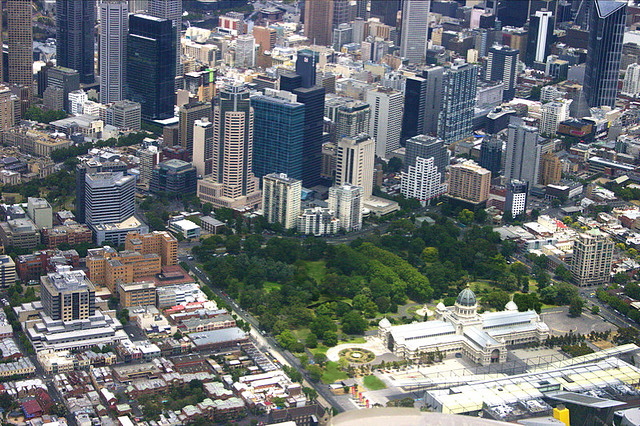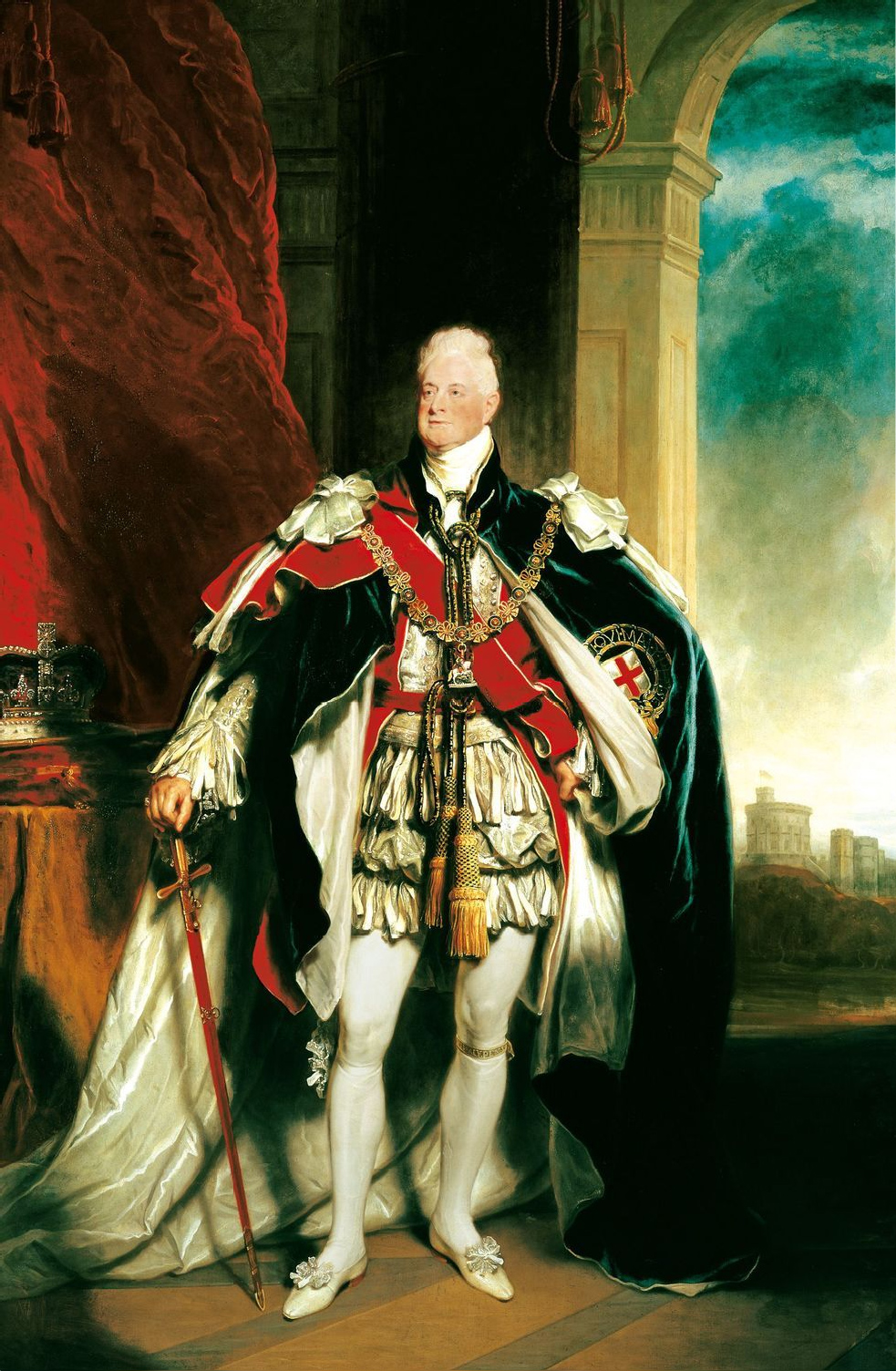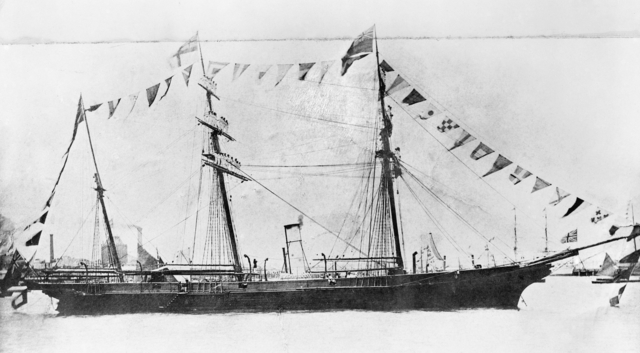|
Netherby (ship)
''Netherby'' was a full-rigged sailing ship of the Black Ball Line that ran aground and sank off the coast of King Island—an island in Bass Strait between Tasmania and the Australian mainland—on 14 July 1866 while sailing from London to Brisbane. Remarkably, all of the 413 passengers and 49 crew were saved, firstly from drowning in the rough waters of Bass Strait and then from starvation on the mainly uninhabited island. The ship and voyage ''Netherby'' was a 944 ton vessel of dimensions 176 x 33 x 22 feet, built in Sunderland in 1858. The vessel was under charter to the Queensland Government to carry emigrants from the United Kingdom to the then-British colony. Queensland, recently separated from its parent colony New South Wales, saw a need to quickly increase its population and so set in place a "land order" system of assisted emigration. ''Netherby'' was the 77th vessel to sail under this system for the Queensland government. Sailing from East India Docks in L ... [...More Info...] [...Related Items...] OR: [Wikipedia] [Google] [Baidu] |
Full-rigged Ship
A full-rigged ship or fully rigged ship is a sailing vessel's sail plan with three or more masts, all of them square-rigged. A full-rigged ship is said to have a ship rig or be ship-rigged. Such vessels also have each mast stepped in three segments: lower mast, top mast, and topgallant mast. Other large, multi-masted sailing vessels may be regarded as ships while lacking one of the elements of a full-rigged ship, e.g. having one or more masts support only a fore-and-aft sail or having a mast that only has two segments. Masts The masts of a full-rigged ship, from bow to stern, are: * Foremast, which is the second tallest mast * Mainmast, the tallest * Mizzenmast, the third tallest * Jiggermast, which may not be present but will be fourth tallest if so If the masts are of wood, each mast is in three or more pieces. They are (in order, from bottom up): * The lowest piece is called the ''mast'' or the ''lower''. * Topmast * Topgallant mast * Royal mast, if fitted On steel-m ... [...More Info...] [...Related Items...] OR: [Wikipedia] [Google] [Baidu] |
Geelong
Geelong ( ) (Wathawurrung: ''Djilang''/''Djalang'') is a port city in the southeastern Australian state of Victoria, located at the eastern end of Corio Bay (the smaller western portion of Port Phillip Bay) and the left bank of Barwon River, about southwest of Melbourne, the state capital of Victoria. Geelong is the second largest Victorian city (behind Melbourne) with an estimated urban population of 268,277 as of June 2018, Estimated resident population, 30 June 2018. and is also Australia's second fastest-growing city. Geelong is also known as the "Gateway City" due to its critical location to surrounding western Victorian regional centres like Ballarat in the northwest, Torquay, Great Ocean Road and Warrnambool in the southwest, Hamilton, Colac and Winchelsea to the west, providing a transport corridor past the Central Highlands for these regions to the state capital Melbourne in its northeast. The City of Greater Geelong is also a member of thGateway Cities Allian ... [...More Info...] [...Related Items...] OR: [Wikipedia] [Google] [Baidu] |
Ships Built On The River Wear
A ship is a large watercraft that travels the world's oceans and other sufficiently deep waterways, carrying cargo or passengers, or in support of specialized missions, such as defense, research, and fishing. Ships are generally distinguished from boats, based on size, shape, load capacity, and purpose. Ships have supported exploration, trade, warfare, migration, colonization, and science. After the 15th century, new crops that had come from and to the Americas via the European seafarers significantly contributed to world population growth. Ship transport is responsible for the largest portion of world commerce. The word ''ship'' has meant, depending on the era and the context, either just a large vessel or specifically a ship-rigged sailing ship with three or more masts, each of which is square-rigged. As of 2016, there were more than 49,000 merchant ships, totaling almost 1.8 billion dead weight tons. Of these 28% were oil tankers, 43% were bulk carriers, and 13% were con ... [...More Info...] [...Related Items...] OR: [Wikipedia] [Google] [Baidu] |
1858 Ships
Events January–March * January – **Benito Juárez (1806–1872) becomes Liberal President of Mexico. At the same time, conservatives install Félix María Zuloaga (1813–1898) as president. **William I of Prussia becomes regent for his brother, Frederick William IV, who had suffered a stroke. * January 9 ** British forces finally defeat Rajab Ali Khan of Chittagong ** Anson Jones, the last president of the Republic of Texas, commits suicide. * January 14 – Orsini affair: Felice Orsini and his accomplices fail to assassinate Napoleon III in Paris, but their bombs kill eight and wound 142 people. Because of the involvement of French émigrés living in Britain, there is a brief anti-British feeling in France, but the emperor refuses to support it. * January 25 – The ''Wedding March'' by Felix Mendelssohn becomes a popular wedding recessional, after it is played on this day at the marriage of Queen Victoria's daughter Victoria, Princess Royal, to Prince ... [...More Info...] [...Related Items...] OR: [Wikipedia] [Google] [Baidu] |
The Cornwall Chronicle
''The Cornwall Chronicle'' was a newspaper published in Launceston, Tasmania, Australia Australia, officially the Commonwealth of Australia, is a Sovereign state, sovereign country comprising the mainland of the Australia (continent), Australian continent, the island of Tasmania, and numerous List of islands of Australia, sma ... from 14 February 1835 to 13 November 1880. The publisher was William Lushington Goodwin. References External links * * {{DEFAULTSORT:Cornwall Chronicle Defunct newspapers published in Tasmania Publications established in 1835 Publications disestablished in 1880 ... [...More Info...] [...Related Items...] OR: [Wikipedia] [Google] [Baidu] |
The Border Watch
''The Border Watch'' is an Australian newspaper based in Mount Gambier, South Australia, as of October 2020 owned by TBW Today Pty Ltd. The paper services Mount Gambier, the South Australian Limestone Coast, and parts of Western Victoria. It is the oldest and largest regional newspaper in South Australia. After 159 years of publishing the newspaper (along with sister publications '' The Pennant'' and the '' South Eastern Times'') was briefly discontinued on 21 August 2020. However, ''The Border Watch'' resumed operation, under a consortium of new publishing owners, in an initial weekly format on 16 October 2020. History ''The Border Watch'' was first published on 26 April 1861 by proprietor and editor Andrew Frederick Laurie (1843–1920), aided by his brother Park Laurie (1846–1928) and their mother, the widow of the Rev. Alexander Laurie, first Presbyterian minister of nearby Portland, Victoria. It started as a 4-page, single broadsheet weekly in Gambierton, as Mount Gambie ... [...More Info...] [...Related Items...] OR: [Wikipedia] [Google] [Baidu] |
The Age
''The Age'' is a daily newspaper in Melbourne, Australia, that has been published since 1854. Owned and published by Nine Entertainment, ''The Age'' primarily serves Victoria (Australia), Victoria, but copies also sell in Tasmania, the Australian Capital Territory and border regions of South Australia and southern New South Wales. It is delivered both in print and digital formats. The newspaper shares some articles with its sister newspaper ''The Sydney Morning Herald''. ''The Age'' is considered a newspaper of record for Australia, and has variously been known for its investigative reporting, with its journalists having won dozens of Walkley Awards, Australia's most prestigious journalism prize. , ''The Age'' had a monthly readership of 5.321 million. History Foundation ''The Age'' was founded by three Melbourne businessmen: brothers John and Henry Cooke (who had arrived from New Zealand in the 1840s) and Walter Powell. The first edition appeared on 17 October 1854. ... [...More Info...] [...Related Items...] OR: [Wikipedia] [Google] [Baidu] |
Bendigo Advertiser
The ''Bendigo Advertiser'' (commonly referred to as ''"The Addy"'') is an Australian regional newspaper. It is the daily (Monday–Saturday) newspaper for Bendigo, Victoria, and its surrounding region. The paper is published by Australian Community Media with a circulation between 5,000 and 7,000 depending on the day of publication. First published in 1853, the ''Bendigo Advertiser'' has undergone many changes since its inception, including a move to tabloid format and a change in name from ''The Bendigo Advertiser'' to just ''The Advertiser'' before settling on its current name from 3 April 2010. In November 1918 the paper was purchased by the proprietors of its competitor ''The Bendigo Independent'', which amalgamated the two titles under the banner of ''The Bendigo Advertiser''. The ''Bendigo Advertiser'' currently delivers news as a printed newspaper, digital paper and on its website and social media. Currently, the ''Bendigo Advertiser'' employs about 45 staff in Bendigo ... [...More Info...] [...Related Items...] OR: [Wikipedia] [Google] [Baidu] |
Royal Exhibition Building
The Royal Exhibition Building is a World Heritage-listed building in Melbourne, Victoria, Australia, built in 1879–1880 as part of the international exhibition movement, which presented over 50 exhibitions between 1851 and 1915 around the globe. The building sits on approximately , is long and is surrounded by four city streets. It is at 9 Nicholson Street in the Carlton Gardens, flanked by Victoria, Carlton and Rathdowne Streets, at the north-eastern edge of the central business district. It was built to host the Melbourne International Exhibition in 1880–81, and then hosted the even larger Centennial International Exhibition in 1888, and the formal opening of the first Parliament of Australia in 1901. The building is representative of the money and pride Victoria had in the 1870s. Throughout the 20th century smaller sections and wings of the building were subject to demolition and fire; however, the main building, known as the Great Hall, survived. It received restor ... [...More Info...] [...Related Items...] OR: [Wikipedia] [Google] [Baidu] |
Williamstown, Victoria
Williamstown is a suburb in Melbourne, Victoria, Australia, south-west of Melbourne's Central Business District, located within the City of Hobsons Bay local government area. Williamstown recorded a population of 14,407 at the 2021 census. History Indigenous history Indigenous Australians occupied the area long before maritime activities shaped the modern historical development of Williamstown. The Yalukit-willam clan of the Kulin nation were the first people to call Hobsons Bay home. They roamed the thin coastal strip from Werribee to Williamstown/Hobsons Bay. The Yalukit-willam were one clan in a language group known as the Bunurong, which included six clans along the coast from the Werribee River, across the Mornington Peninsula, Western Port Bay to Wilsons Promontory. The Yalukit-willam referred to the Williamstown area as "koort-boork-boork", a term meaning "clump of she-oaks", literally "She-oak, She-oak, many." The head of the Yalikut-willam tribe at the time of the ... [...More Info...] [...Related Items...] OR: [Wikipedia] [Google] [Baidu] |
HMVS Victoria (1855)
HMVS ''Victoria'' (Her Majesty's Victorian Ship; also referred to with the prefix HMCSS-Her Majesty's Colonial Steam Sloop) was a 580-ton combined steam/sail sloop-of-war built in England in the 1850s for the colony of Victoria, Australia. She was the second warship to be built for an Australian colonial navy, the first British-built ship given to a colony of the British Empire, and the first Australian warship to be deployed overseas when she supported New Zealand colonists during the First Taranaki War. Construction and acquisition ''Victoria'' was the first warship to be built in England for one of the British colonies. She was the second ship ordered for an Australian colonial navy, after the Australian-built gunboat ''Spitfire'' for the New South Wales colony. She was designed by the British naval architect Oliver Lang and launched in London on 30 June 1855 by Lady Constance Talbot. Commander William Henry Norman sailed ''Victoria'' from Plymouth to Hobsons Bay, arriving on ... [...More Info...] [...Related Items...] OR: [Wikipedia] [Google] [Baidu] |
William Henry Norman
William Henry Norman (1812–1869) was a sea captain in Australia. As commander of HMVS ''Victoria'', he engaged in the First Taranaki War in New Zealand and the search for explorers Burke and Wills. Early life William Henry Norman was born in March 1812 in Upnor, Kent, England. He entered the mercantile marine service and became a master mariner. Marine commander Norman was captain of , a vessel owned by Captain Farquharson for nine years. From 1848, he was the commander of ''Coromandel'' for four years. In 1851, he joined the General Screw Steam Shipping Company where he superintended the fit-out of ''Lady Jocelyn'' which he took to Australia. On returning to England, the company appointed him to ''Queen of the South'', which he took to Australia. Victorian Government service One of the passengers on ''Queen of the South'' was Sir Charles Hotham, travelling to take up appointment as Governor of Victoria. A naval officer himself, Hotham was impressed with Norman and enga ... [...More Info...] [...Related Items...] OR: [Wikipedia] [Google] [Baidu] |







